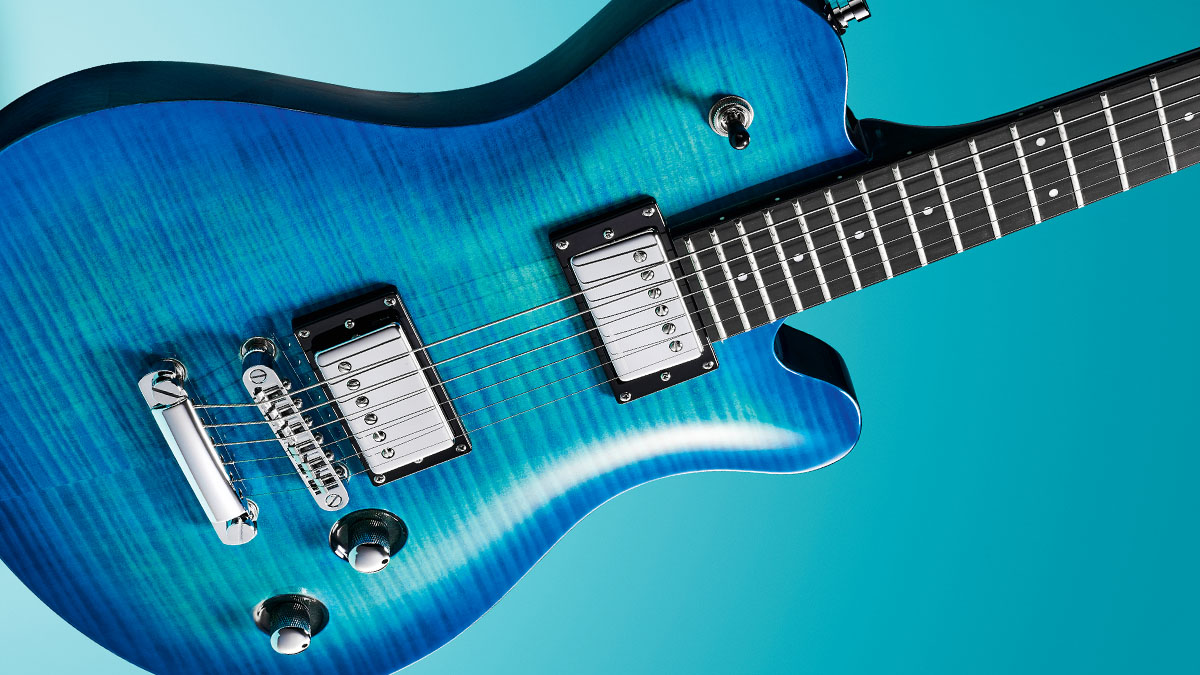Guitar World Verdict
It's pricey for a Chinese-built guitar but it does have an exquisite finish, excellent pickups and great tone
Pros
- +
Seymour Duncan pickups.
- +
Nice choice of finishes.
- +
Angled heel for upper-fret access.
- +
High-quality build.
Cons
- -
Set-up was a bit off.
- -
The maple top is just a veneer.
- -
You could get a US-made Gibson at a similar price.
You can trust Guitar World
Though they’re perhaps better known for being the electric guitar brand owned by Warwick, the Framus legacy is one that stretches back all the way to violin making in the mid-40s.
It was founder Fred Wilfer who cunningly realized that the Sudeten German luthiers expelled from Czechoslovakia following the Second World War could put their skills to use at a rival production base in Franconia (hence the first half of the company’s name).
The 50s rock ’n’ roll revolution saw the electric guitar become their best-seller, and by the mid-60s Framus were the biggest manufacturers in Europe. A decade later, however, the company filed for bankruptcy and lay dormant for two decades until Warwick brought the name back.
As well as usage by members of The Beatles and The Rolling Stones in their heyday, Framus instruments have been seen in the hands of contemporary artists including Simple Plan and Funeral For A Friend, with signature models for Alice In Chains’ William DuVall, Bon Jovi’s Phil X and prog-metal mastermind Devin Townsend.
Used in higher gain settings, there’s more than enough punch and sustain to appease hard rock and heavy metal players
The Chinese-made D-Series was originally unveiled at NAMM 2018, advertised as the more affordable Framus experience, retailing roughly around a third of their Pro-Series equivalents at under a grand.
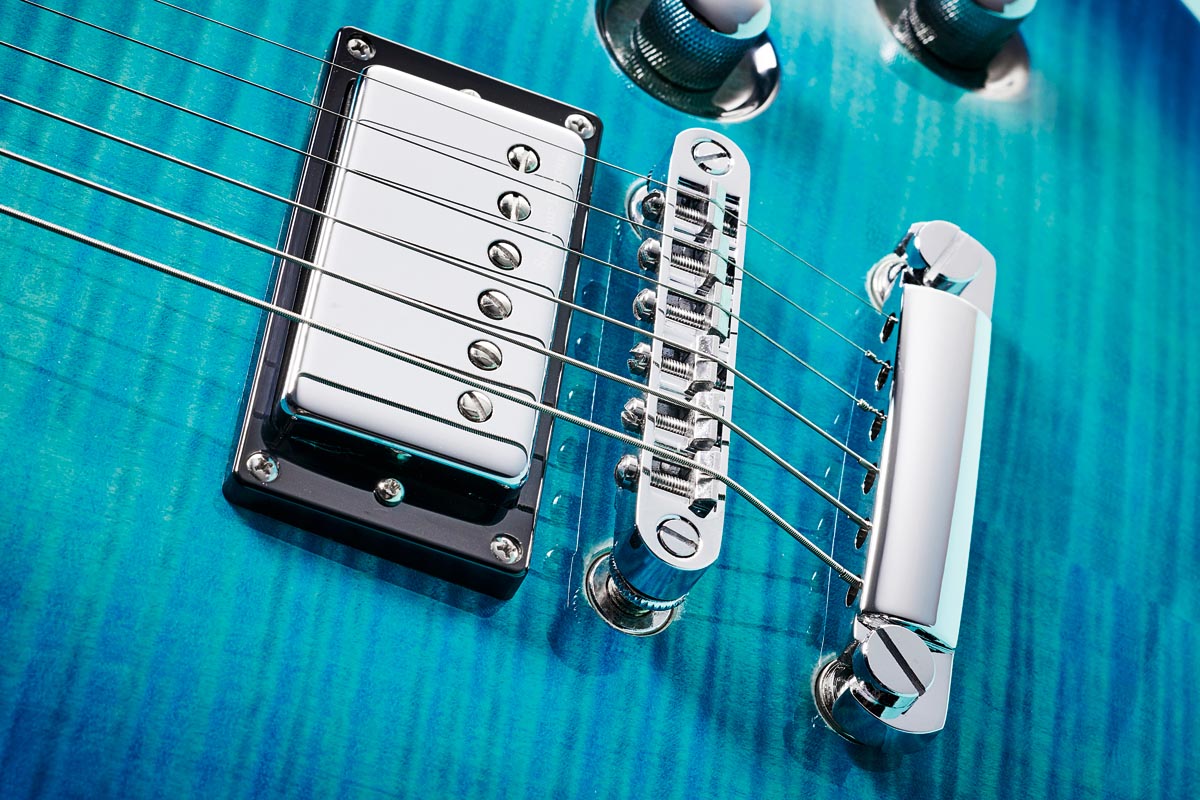
Incorporating the Seymour Duncan ‘59/JB set may have added to the overall RRP, but they’re definitely worth it.
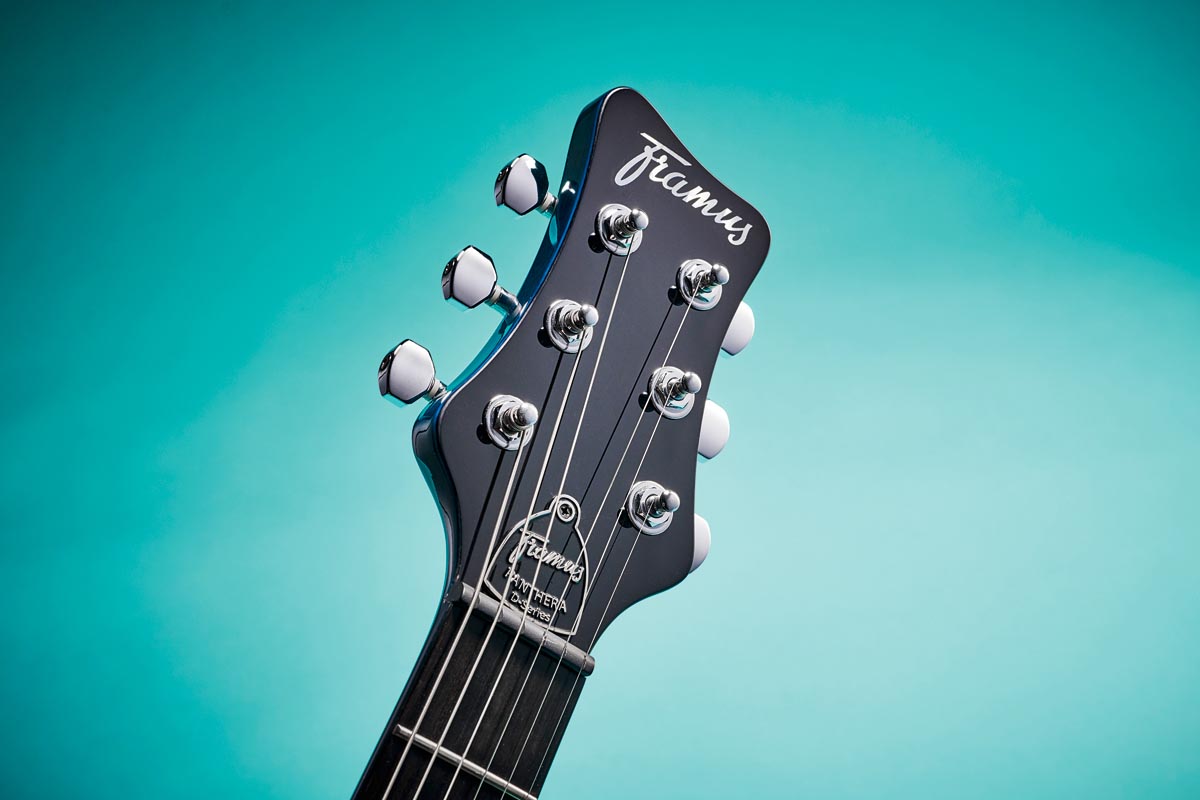
The Framus brand's history stretches back to the 1940s, and the post-war rock 'n roll explosion saw the company grow.
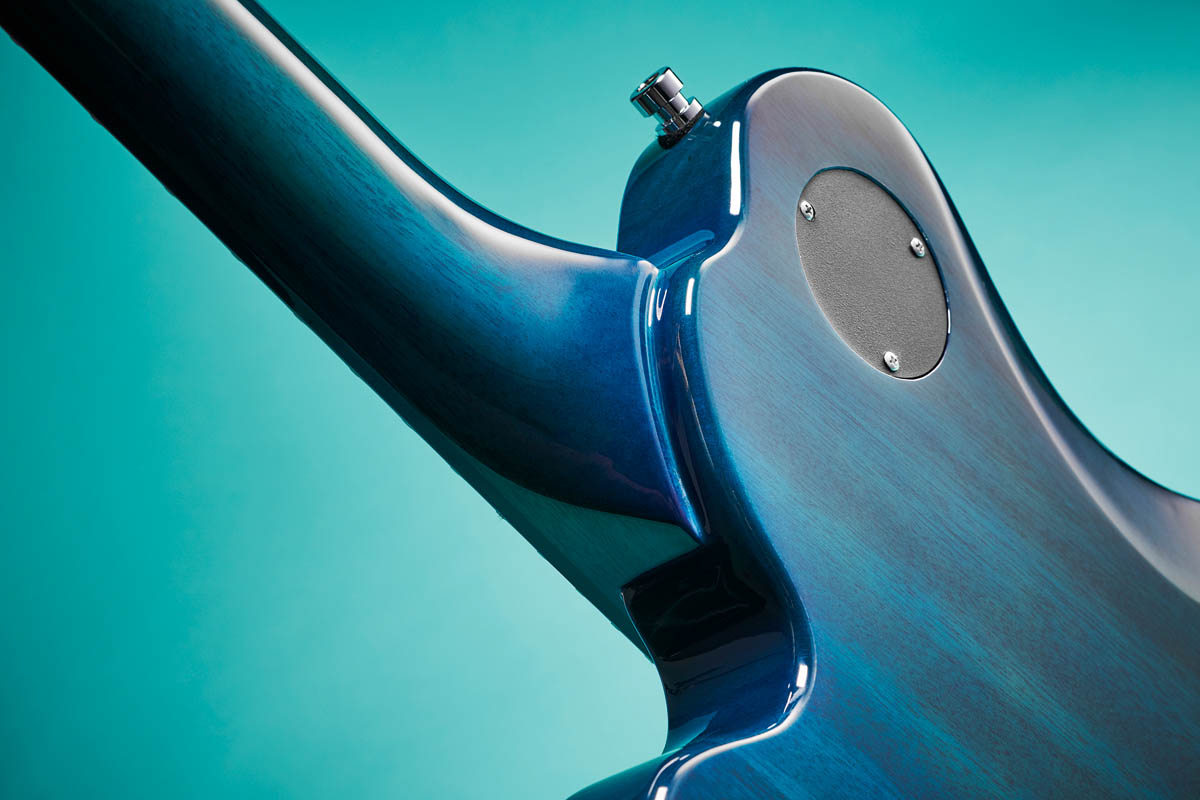
The Panthera Supreme has a neatly sculpted heel to make life as a lead guitarist a little easier.
On first glance, the Panthera Supreme is notable for its simple elegance. There’s a three-way pickup selector and then just one knob for tone and another for volume; like a Les Paul, but simplified. The pickups themselves also follow that spirit of tradition with a Seymour Duncan ’59 in the neck and the much hotter JB in the bridge, giving users the choice of cleaner, more vintage style tones as well as more modern crunch.
Used in higher gain settings, there’s more than enough punch and sustain to appease hard rock and heavy metal players, and those who like backing down a guitar’s volume for a more bluesy drive will find these pickups respond in a way that’s incredibly dynamic.
All the latest guitar news, interviews, lessons, reviews, deals and more, direct to your inbox!
In the middle position with both pickups on, the Panthera Supreme rings a little less dark than a Les Paul Standard and with more of a bell-like emphasis than a Paul Reed Smith. That could partly be down to the weight and cut of the Supreme series, with a more modern build compared to the monstrously heavy LP-type guitars of the past, though thankfully with few compromises on sustain.
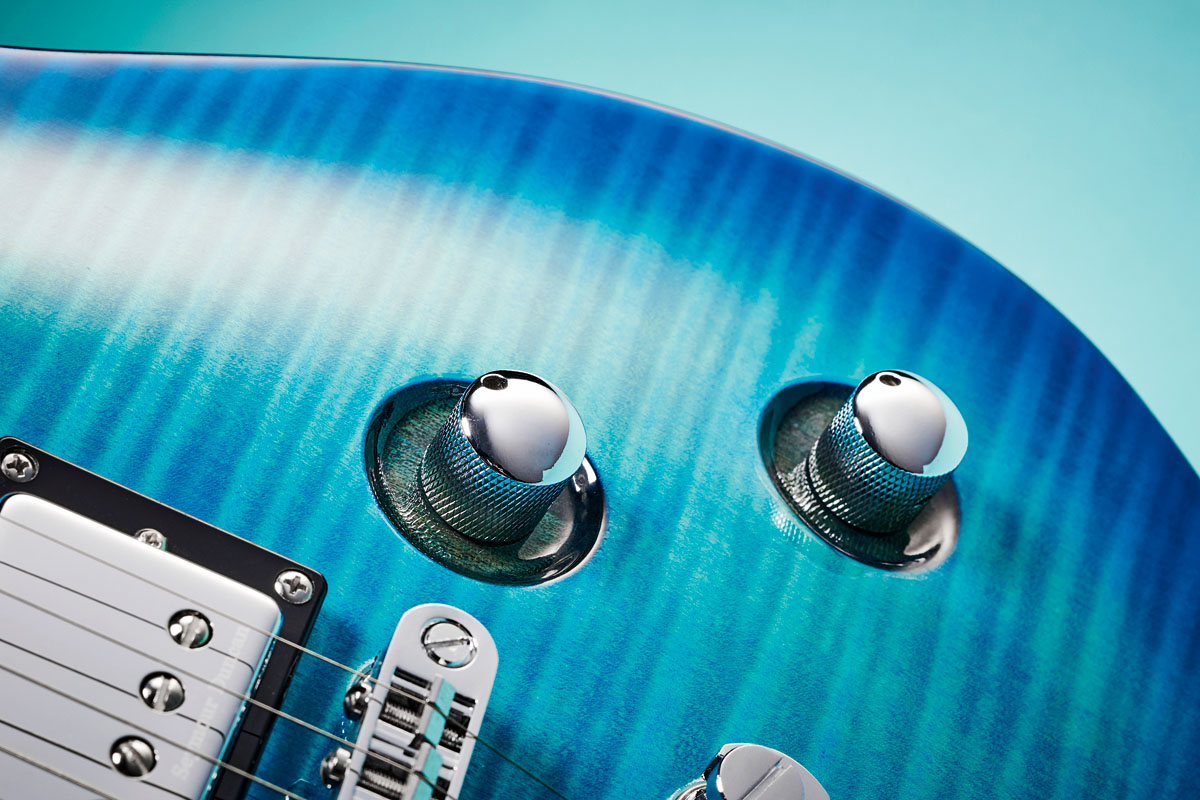
There is a reason why maple veneers have been used increasingly by guitar producers for budget ranges over the last decade - they offer the aesthetics of the most beautiful tonewoods on the planet at a fraction of the cost.
Veneers are typically very thin layers of wood, usually only one or two millimeters thick, so tend not to affect the sound of a guitar in the way that a much thicker cap or top does.
Veneers are more of a visual addition to a guitar - recreating the elegance of those mouth-wateringly exquisite custom shop finishes, renowned for their incredibly detailed quilts and flames, without breaking the bank.
Perhaps one of the key selling points of the D-Series Panthera Supreme is the option for this Bleached Ocean Blue Burst. Some of the most eye-watering guitars ever made have utilized the allure of aquamarine colors - from Fender seafoams and Gibson emeralds to PRS’s extravagant Ocean Turquoises, there’s something about striking about these kinds of finishes - and rarely do they part for less than a grand.
For those who prefer more understated aesthetics, the other options for a High Polish Burgundy Burst or Nirvana Black Transparent still exude a similar sense of class - though it’s worth noting the flames come from the maple veneer rather than a proper top.
The playability of the guitar isn’t particularly great straight out of the box, the neck relief and factory-set action just about capable of simple chordal playing over anything ambitious. With a little bit of straightforward tweaking, however, it’s a machine that quickly comes to life and holds fort with stable tuning even against the most extreme bending you throw at it.
The rivals
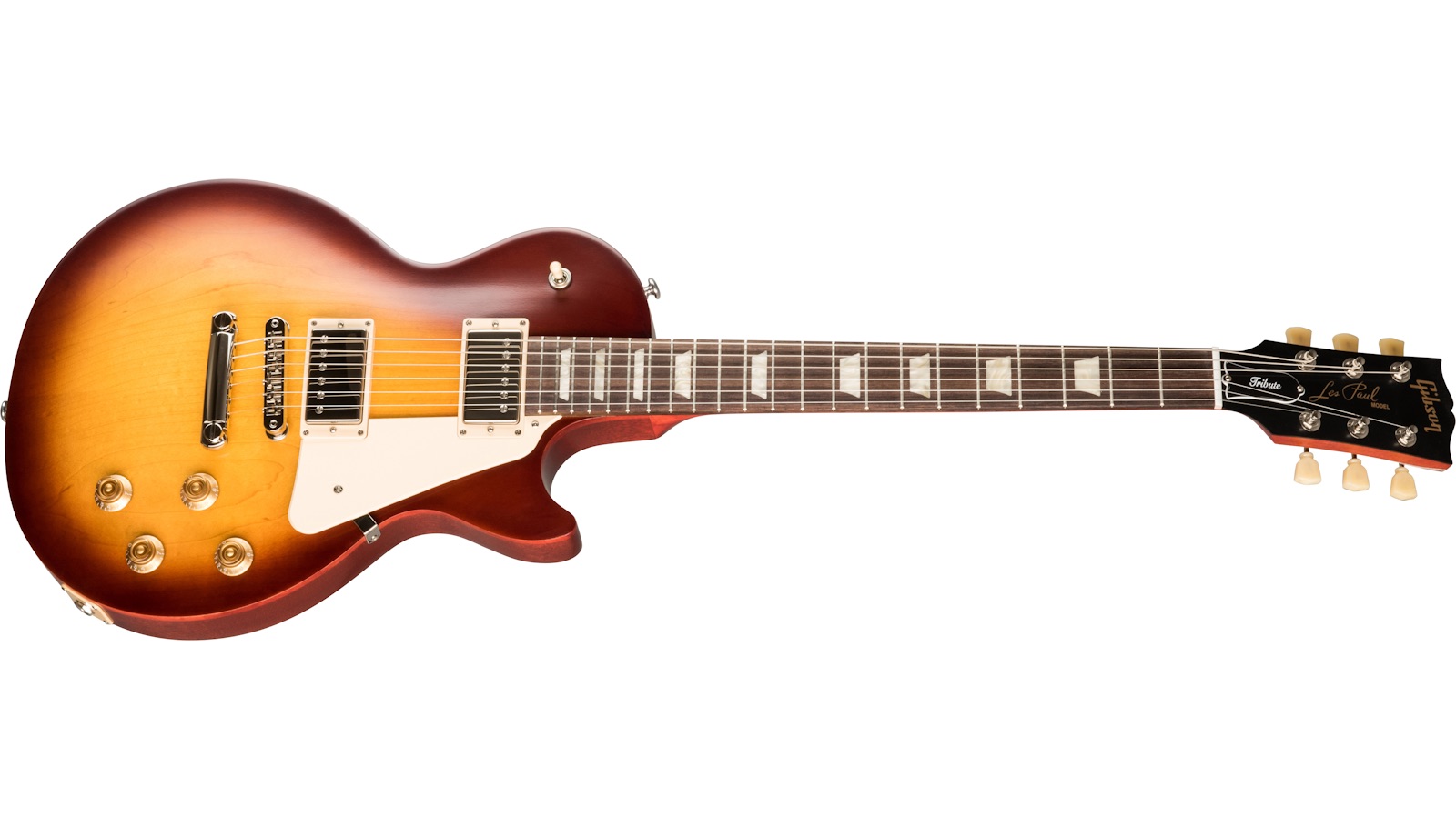
Gibson Les Paul Tribute ($1,199, £999)
Though it sits at the bottom of the Gibson Les Paul hierarchy, there’s a lot to be said for getting an American-made instrument at virtually the same price point.
PRS SE Standard ($589, £475)
Manufactured in South Korea, the SE series is the PRS answer to producing classy guitars that almost everyone can afford.
ESP LTD EC-1000 Deluxe ($999, £845)
Though it’s only available in vintage black, complemented by gold hardware and vintage yellow binding, this EMG-loaded ESP will be tempting for higher-gain players.
The hardware and components are all of high quality - the Tune-O-Matic bridge, graphite nut and Framus machine heads are built to last.
Priced fairly close to Gibson’s American-made Tribute series, there are certain advantages with the Framus, from its finishes to the Seymour Duncan pickups.
For some, this D-Series model offers the Framus sound and look for less money, while many others may feel the price-tag is fairly sizable for an instrument constructed in the Far East. Either way, this might not necessarily be an instrument for every type of player, but what it does do, it does very well indeed.
Specs
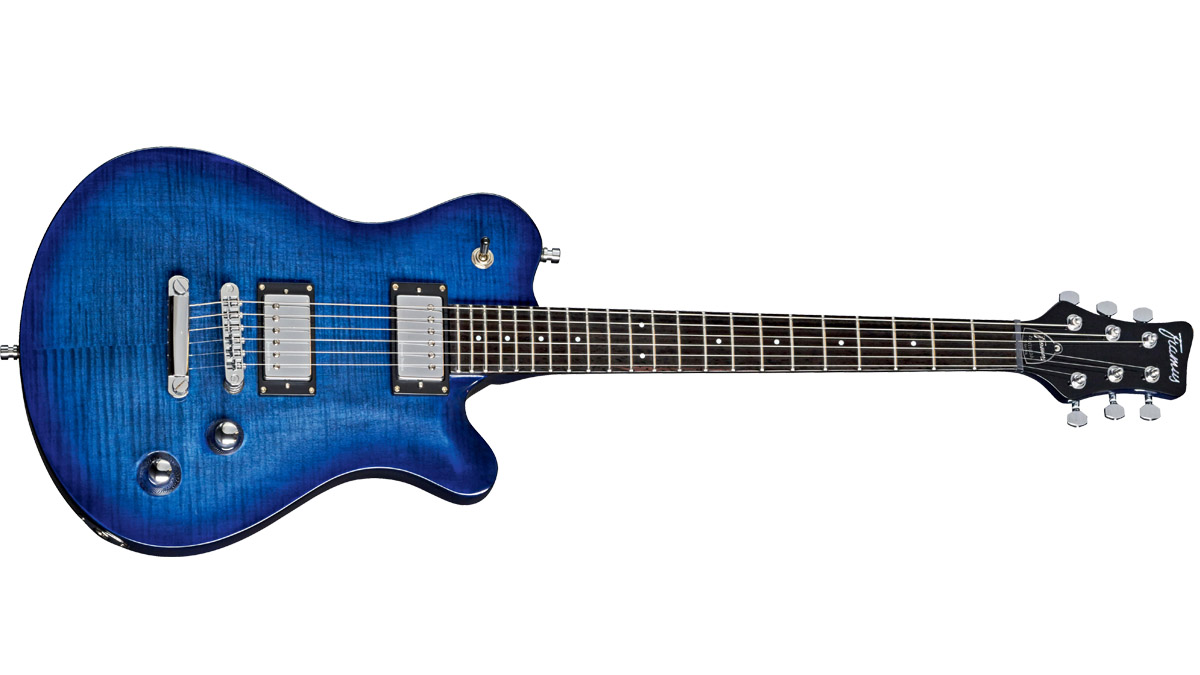
- PRICE: $896.80 approx, £825
- BODY: Mahogany w/ AAAA Flamed Veneer top
- NECK: Mahogany
- SCALE: 628 mm (24.75”)
- FINGERBOARD: Tigerstripe Ebony
- FRETS: 22
- PICKUPS: Seymour Duncan ‘59 SH-1n Chromecover (neck), JB SH-4b Chromecover (bridge)
- CONTROLS: Three-way pickup selector, 1x volume, 1x tone
- HARDWARE: Tune-O-Matic Bridge, Warwick security locks, Framus machine heads
- LEFT-HANDED: Yes
- FINISH: Bleached Ocean Blue Burst [as reviewed], Burgundy Blackburst and Nirvana Black Transparent
- CASE: Rockbag Student Line Plus Gig Bag
For more information, head to Framus Guitars.
Amit has been writing for titles like Total Guitar, MusicRadar and Guitar World for over a decade and counts Richie Kotzen, Guthrie Govan and Jeff Beck among his primary influences as a guitar player. He's worked for magazines like Kerrang!, Metal Hammer, Classic Rock, Prog, Record Collector, Planet Rock, Rhythm and Bass Player, as well as newspapers like Metro and The Independent, interviewing everyone from Ozzy Osbourne and Lemmy to Slash and Jimmy Page, and once even traded solos with a member of Slayer on a track released internationally. As a session guitarist, he's played alongside members of Judas Priest and Uriah Heep in London ensemble Metalworks, as well as handled lead guitars for legends like Glen Matlock (Sex Pistols, The Faces) and Stu Hamm (Steve Vai, Joe Satriani, G3).
